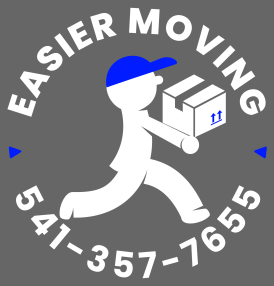MOVING HACKS
The Beginning
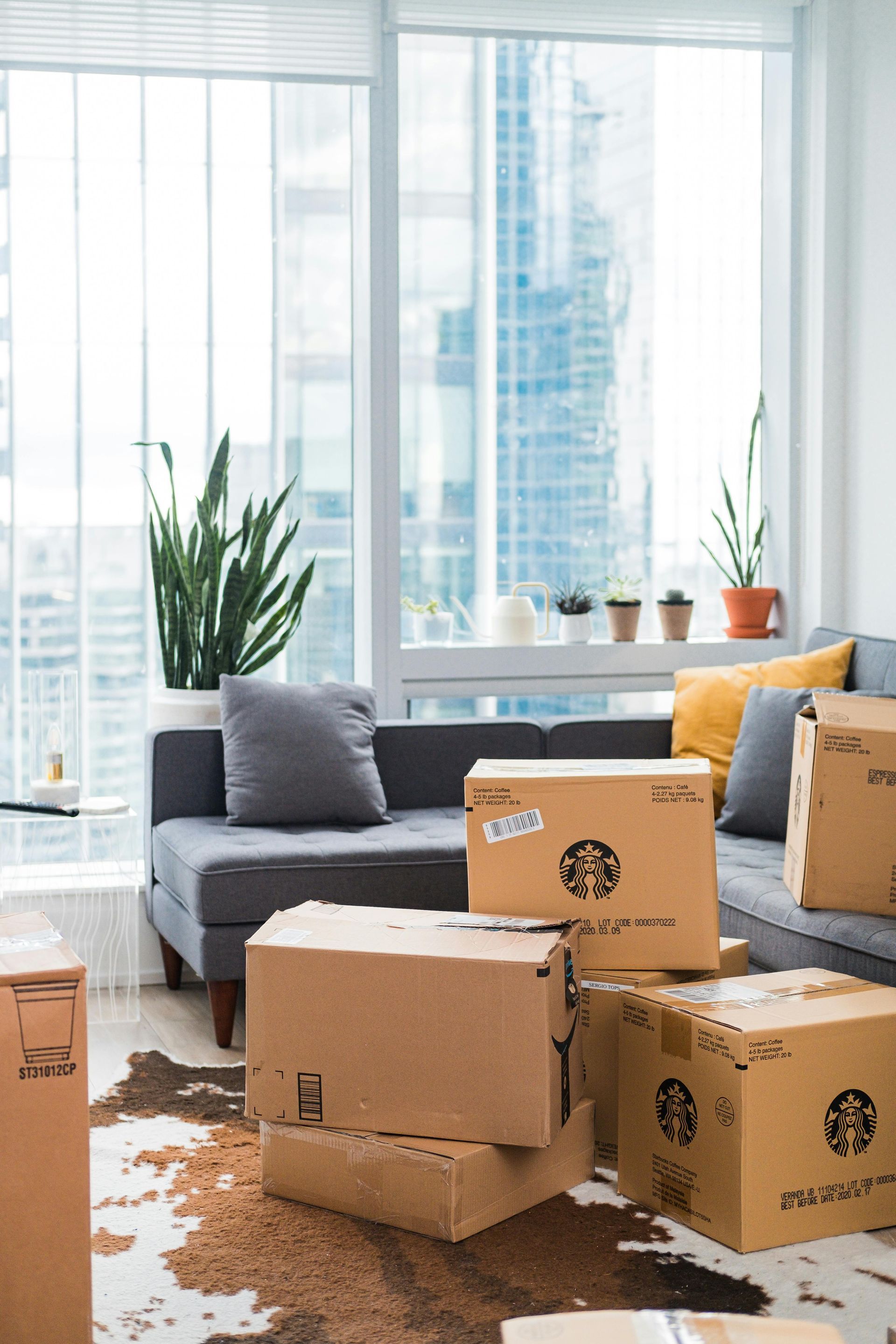
Moving is a part of life. And whether you move often or are packing up your bags for the first time in a long time, it’s one of the three biggest stresses in life. It can take its toll on even the best of planners. Fortunately, while moving isn’t necessarily easy on anyone, there are some ways to pack and unpack faster, reduce the amount of work, and ultimately make the process go just a bit smoother.
Sound too good to be true? Try our best moving tips and packing hacks and best moving hacks for yourself and discover creative ways to improve your move. Find out how to move in Eugene OR
Figure out the logistics: DIY or pro help?
Figuring out how to move .Just thinking about all the tasks involved in the move might cause you to feel overwhelmed and panicky. Yes, a lot will need to be accomplished, but start with thinking about whether you are going to hire a full service moving company or rent a truck. Do you think you need professional help, or can you pull off a DIY move? Long Distance moves can also be done with a container company such as PODS, Packrat, Ubox, and abf.
If you’re using professional movers, make sure the company is legitimate . If you’re renting a truck for your move, you can still hire professionals to load and or unload for you. Either way, get at least three quotes from three different companies. The sooner you accomplish this, the sooner you can move on to other tasks.
We recommend that you research the companies eight weeks before the move and get quotes and hire them at least seven weeks before the move.
Create a moving checklist
Once you have hired movers or rented a truck, figure out what needs to be done next. You can use our moving checklist create your own, but you’ll need some sort of a list to guide you through the process and leading up to the moving day. As new tasks come, add them to the list. Staying organized will reduce the stress of moving. This is one of the best moving tips.
Set your budget
Moving can get expensive, and you don’t want to end up with major sticker shock on top of everything else. Please take advantage of this moving cost calculator and figure out how much you can expect to spend.
Plan out your packing supplies
Use this packing calculator to get a good idea of just how much you’ll need in terms of packing supplies. This way, you can be sure to get what you need on the first run to the store.
Use most of your food
Professional Movers wont pack up perishable food, and if there is any storage planned, putting any food in boxes is a bad idea.. Make it a goal to eat as much of the food you already have in your house as you can before moving day. Turn it into a game and get creative with recipes to see how much you can use up. Do good at the same time by donating unopened/unexpired food to a local food bank. We recommend Food For Lane County, then your movers can pick up the unwanted food items and deliver them to the local food bank for you. The non-profit works with hundreds of relocation companies, so you should have no problem finding a mover to meet your needs.
Get Rid of Stuff
One of the largest Cost Saving Tips to make your move easier will be if you organize your belongings and toss, recycle or donate what you don’t need instead of lugging it with you to your new home. It’s an undertaking, but these tips can help you do it.
Go through your belongings room by room
Open the closets and the cabinets, don’t skip any drawers. Get an idea of how much you’ve got and make notes of what can go. Take inventory of what furniture is not worth moving.
Do a closet purge
If it doesn’t fit, is out of style, and/or you haven’t worn it in a year, get rid of it. The same goes for your children’s closets, linen closets and bathroom shelves
Get rid of items you wouldn’t buy again
When deciding whether an item serves a purpose in your life, ask yourself whether you would go out and spend money on it if you didn’t already have it. If you wouldn’t, you likely don’t need it.
Make donation pickup arrangements
If you know you’ll be donating big items like furniture and rugs, schedule a pickup ahead of time so you can be sure you have an organization pick them up. If you cannot find a donation service to pick up your donations, we can do a donation run at junk hauling rates so that you don’t have to worry about how you’re going to transport everything.
Consider short-term storage
If there are some items that you can’t commit to getting rid of yet, but you’re not sure you need, you may want to put them in a short term storage unit , and then evaluate later.
Hire a junk removal company/ Or a moving Coordinator
It can take a lot of time to clean spaces like garages, basements and attics. At Easier Moving, We provide a reduced rate for this service. Keep what you want, and the rest can go. We will dispose of the trash, clean up, and even donate items to local charities. Not only won’t have to lug unwanted heavy items like a mattress or a couch, but you’ll be free to focus on other tasks. We can also provide a moving coordinator to help figure out what to take into your new space. This Is especially useful when downsizing, such as a move to a retirement community. We provide comprehensive residential moving services to make your move as smooth as possible.
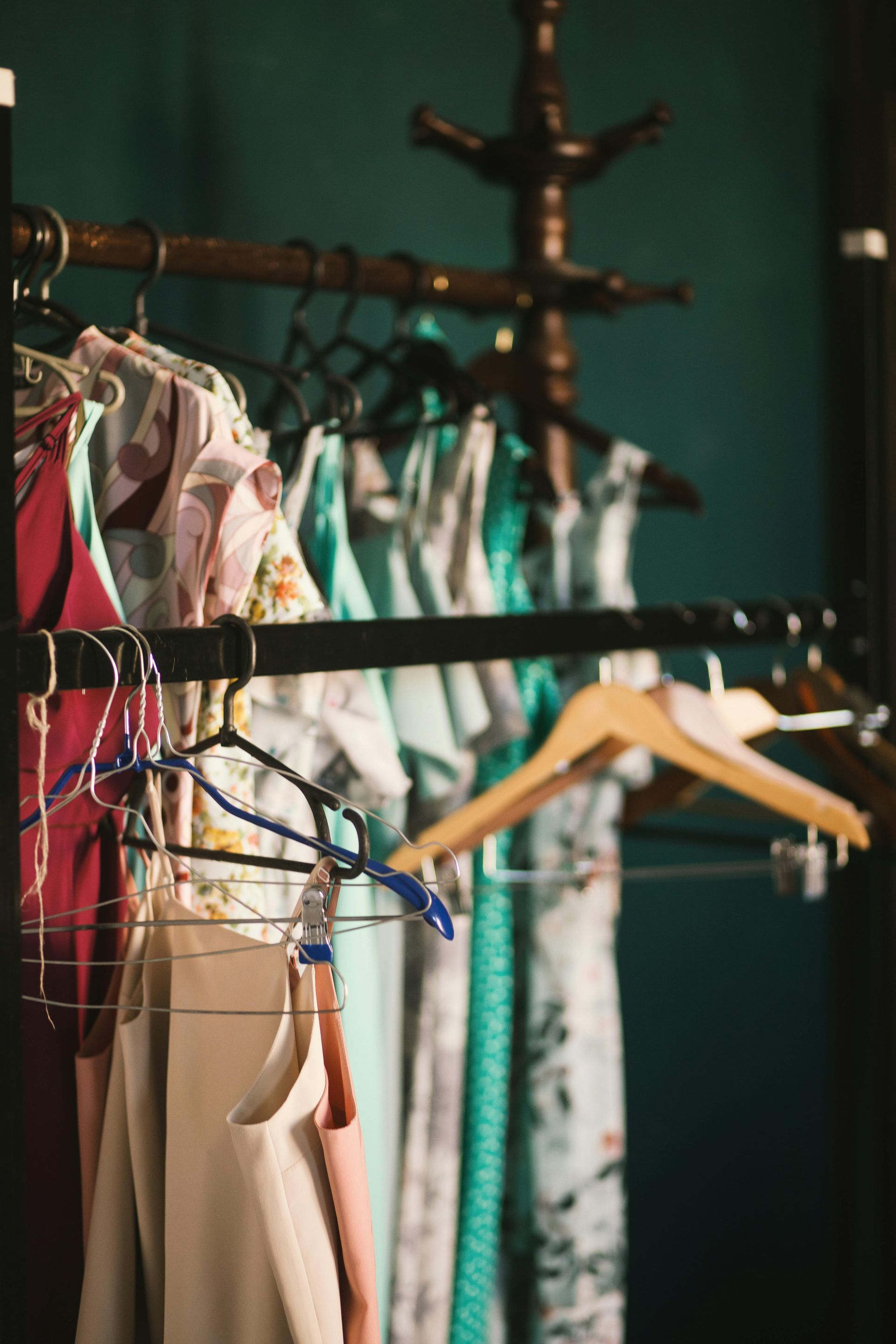
Save money on your move

In addition to being a lot of work, moves can also cost you a lot of money. Follow these moving budget hacks to keep your costs down.
Get quotes from at least three different movers
This helps ensure you get the best price, and you may even find that a company is willing to reduce their estimate if it means getting your business. In Oregon, and some other States, moving household goods is regulated, so only unlicensed movers have different rates for transportation.
Look at all your moving options
The best way to move is the way that makes sense for your needs and your budget. Price compare Full Service Movers, like us, against renting a moving truck or using a POD to hone in on your most cost-effective option.
Do Research
You can often score free packing supplies by calling up local retailers or just asking friends and family members. Facebook Marketplace is also a good place to look.
Be flexible
Have some leeway in terms of when you have to relocate? Save money by opting for a mid month, mid week move. Moving on weekends and the first or last days of the month can be pricier because of higher demand. We have set rates except for after 8 hours on a job, Sundays and holidays.
How to pack for a move
Packing to move might be the most time consuming part of your move. Our best packing tips for are all about saving yourself time while still making sure that your belongings are safe. With that in mind, here are the packing hacks for moving you need to know for a smoother move. A lot of this is actually steps pro movers take
Set up a packing station
Gather your packing materials first. The minimum is boxes, packing tape, packing paper, markers, scissors/knife. Bubble wrap, old towels and blankets, plastic bags of various sizes, including small sealable bags and garbage bags, and color coded labels, are also useful but not necessary.
Set up a surface for your packing station. It could be a folding table or the guest bedroom or, if you can spare it while you pack, a dining room table. If you have nothing else, you can make a table from boxes. Dish packs are the strongest boxes and are best for this. That way, you won’t waste time looking for any supplies and can use the station to tape and label boxes. There should be enough room at your station for packing paper to be laid flat and some free space for setting items to be packed.
Packing and Unpacking Services
Our team of professionals can help you with all your packing and unpacking needs. We use high-quality materials to ensure that your belongings are packed safely and securely, and we can help you unpack everything at your new location.
Pack the packing supplies last
You will probably need at least some supplies on your move day, like tape and markers, so keep them unpacked and at the packing station till the very end.
Put your linens, towels and other soft items to use
Wrap up breakables like glasses or perfume bottles in socks for serious padding, and use linens and towels to cushion fragile, difficult-to-wrap items like lamps and vases. In the kitchen, use dish towels to securely wrap up knives and other sharp objects pointing the same direrction, securing them here with a rubber band or tape. Also wrap sharp items in a layer of paper, write sharp with an arrow pointing to the sharp end. You’ll be amazed by how many household items you already have on hand can be used for packing.
Pack your suitcases
Hard sided luggage can be packed heavier, just remember, because a mover can handle it doesn't mean you might not have to move it around at some point. Soft sided bags should only have lighter items and no fragile items.
Find a place for boxes prior to your move
It can be overwhelming to have too many boxes in your home. Find space: against a wall, in the garage, along a wide hallway. In each room is fine as well, as long as the space is usable. Stay as organized as possible. If you are struggling, ask for help. even inexperienced childrens eyes can sometime see a solution you have missed.
Set up boxes as you need them
Keep your space as clear and manageable as possible by only setting up boxes as you’re ready to fill them. Once a box is filled take it to the packing station for taping and labeling.
Mark and Color-code boxes
Save time with your box labeling by picking up a sheet of different colored stickers and assigning each color a room. That way, you’ll be able to identify what needs to go where super quickly, and you won’t have to hunt for the marker every single time you seal up a box. Another option is to put the name of the room the box is going to on every box. Yet another thing you can do is label boxes with their contents. Just Make sure labels and marking is on the sides of boxes, not the top, so they can be read in a stack . Always mark boxes as fragile if they contain fragile items.
Boxes and contents best practices
The general rule for packing cartons is to fill the space, without over filling. An unfilled box is not as structurally sound as a full one, so fill the holes with paper if nothing else fits. This is especially important with heavy boxes liker books and fragile items.
Put books and heavy items in 1.5cf boxes and smaller only, the exception to this rule is dish pack boxes which have a double wall, and can carry a heavy fragile load.
Fragile light items can be packed in small lighter duty boxes, or dish packs for extra protection. If using small boxes for fragile items, put crushed paper on bottom and sides and top to fully protect the items.
Do not mix fragile items with heavy items, except in dish packs, with layers of crushed pasper between and heavy items on the bottom.
If you are using totes other than the black and yellow ones, make sure they are light, so they can go on top of load, they are not structurally sound.
Put together a moving essentials bag and Box
Pack a small duffle bag or suitcase with the personal items you’ll need access to during your move and right after you’ve arrived at your new place, such as important documents, medications, chargers, basic toiletries, a couple of changes of clothes, etc.
An essentials box (or the open-first box) will save your sanity on your first night in your new home. If should have everything you’ll need right after the move, like paper towels, toilet paper, water, paper plates and plastic utensils, and so on. If you’re moving with a small child, you’ll need to add diapers and extra clothes as well as favorite toys and baby food. For pets, you’ll have to have easy access to their food and food bowls, the leash, treats and chews, the bedding, a litter box, cleanup bags, and your pet’s favorite toys.
Keep the hardware in a plastic bag
When you disassemble furniture, put small hardware in a sealable bag and label it. Tape it to the furniture it belongs to or keep it all in a box together. If you have lots of hardware, create a hardware box for all bags of hardware. you can also wrap hardware in paper. If you use a parts box , make sure each piece has label.
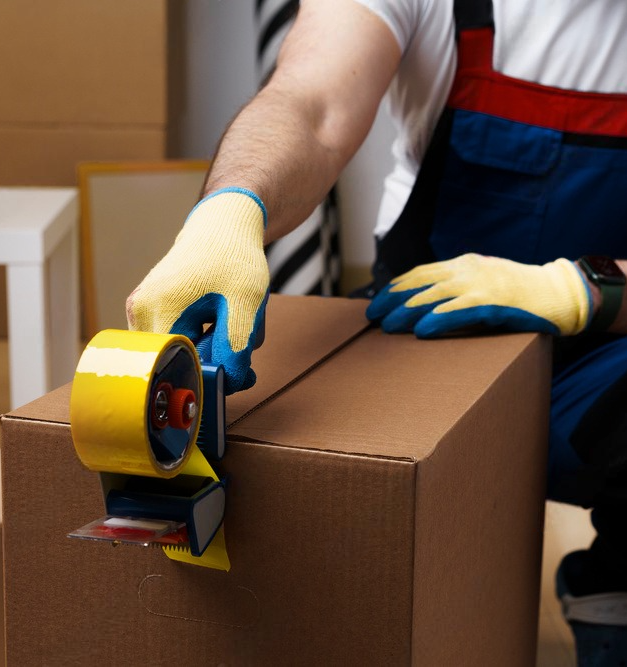
Living room packing tips

Create a moving inventory list of valuable electronics
This includes your TV, computer and other electronics. If hiring a moving company, take photos of your computer beforehand. These photos could come in handy if the computer is damaged while in transit and you need to file a claim.
Gather all product manuals and label the cords
When moving valuable electronic devices like your computer, gather all product manuals and place them in a safe, secure bag. Label the cords. Use original packaging if possible.
Back up your computer hard drive
Should any damage occur while in transit you can prepare by backing up your hard drive. Remember, poorly packed items are rarely covered by insurance.
Take a picture of the back of your TV
It can be difficult to remember where all those wires go. While your TV is still plugged in, take a picture of the back of it so you’ll remember how to set it back up later.
Use a moving blanket to transport a TV if you don’t have the original box
Ideally, you should transport a TV in the box it came from, complete with the Styrofoam it was packed in. If you don’t have one, you can wrap a tv in a moving blanket. This should provide enough padding during transit. And keep it propped up, not laying down. You can keep it propped up in the moving truck by wedging it between mattresses or other soft furniture items. Tv transport cartons can be purchased at a U-haul as well, and is recommended for any tv over 50 inches
Remove light bulbs and shades from lamps
They can break in transit. Use bubble wrap or packing paper and box them. Most moving companies will not take these items un boxed.
Remove what you can from large items
When moving large items, remove fixtures or accessories from the large items for easier transport. Some pieces of furniture have removable legs or backs. Remove cushions from your couch. You can pack them in large boxes or garbage bags. If you’re using professional movers, they might shrink-wrap some upholstered furniture. Remember, any disassembly you do prior to move day saves time and money on move day.
How to move your bedroom
Don’t empty your dresser drawers
Make sure there are no fragile items in the drawers If it’s not too heavy, you can leave the drawers in the dresser and wrap up the dresser itself in plastic wrap. Professionals have giant rubber bands to hold drawers shut.
Leave your clothes on hangers
Keep clothes on their hangers and either group them up and wrap them in large garbage bags, moving blankets, or hang them in a wardrobe box. Fill the bottoms of wardrobe boxes with shoes and miscellaneous from your closet if there is room. Otherwise they can become top heavy and fall over easier.
Roll, don’t fold your clothes
When packing clothes in drawers, roll them instead of folding them to save space.
Use large contractor grade garbage bags
They are big and sturdy enough to hold hanging clothes, towels, linens, bedding, stuffed animals and other non-breakable toys.
Use liquor store boxes for shoes
Boxes used to transport bottles have dividers. You can use them to keep your shoes organized. While you’re at it, consider packing your shoes with small items to maximize space.
Put a fitted sheet on your mattress to keep it clean
If you’re not using a mattress bag to move your mattress, you can put a fitted sheet over it to keep the mattress clean in transit.

Kitchen packing hacks

Use pots to hold small items
Instead of wasting additional boxes for small kitchen items like spices and gadgets, fill up your large pots and other sealable containers with them. You’ll save a ton of space.
Pack plates, bowls, and fragile bakeware vertically
Always use a layer of crushed paper first. Packing these items vertically will ensure they’re less likely to crack or break. Don’t forget to wrap them well or to use foam pouches. You can do layers if using dish packs as long as there is crushed paper between for padding
Put essential appliances in laundry baskets
Put small items you’ll need right away (like your coffee maker and toaster) in a laundry basket so you can put them on your counter right away in your new place. just make sure to wrap them first and shrink wrap the top shut.
Stack your pots and pans
Use a large or medium box to stack pots and pans. Put packing paper between them. Stuff paper or dish towels into openings to keep your pots and pans from moving around in transit. Wrap glass lids and put in a separate box.
Pack glasses and stemware into boxes with dividers Or dish packs
This is the safest way to transport them. You can buy specialty dividers that fit into standard boxes or use the liquor store boxes in a pinch. Wrap each glass in packing paper. Start rolling from one corner, fold sides in and continue rolling. One piece of paper per piece, and don’t stack anything on top of them, unless in a dish pack with crushed paper between each layer.
Wrap your utensil tray
The easiest way to transport flatware and serving utensils is to wrap the tray in plastic wrap or paper and lay it flat in the box. You can add things on top.
Wrap knives in dish towels
Roll each knife in a full sheet of packing paper and then wrap a dish towel around them and secure the whole thing with a rubber band. Pack knives on their side — never facing up ,Also wrap sharp items in a layer of paper, write sharp with an arrow pointing to the sharp end
Defrost and clean your fridge
Don’t forget to defrost and clean your fridge a day or two before the move. This goes for freezers as well. This is not necessary on local or short distance moves.
Prep your large appliances (if moving them)
Unplug them, remove any hoses, and tape all doors shut. This can be done by most moving professionals with a signed disclaimer.
Pack liquids together
The best way to keep liquids from damaging valuables during your move is to pack them together. To prevent leaks, secure the openings of your oils and sauces with a piece of plastic wrap. Remove the top, place the wrap, put the top back. Wrap the top from the outside with more plastic wrap or use a sealable plastic bag for extra protection. If you are using cardboard then use a garbage bag to line the box.
Use plastic bins to pack liquids
We advise using plastic bins when packing liquids. Unlike with cardboard, you don’t have to worry that a spill will leak out onto other items. Plastic ensures that any spilled liquids are completely contained and the boxes can be cleaned and reused. The black and yellow bins are the most durable, and almost always hold up to moving.
Dining room packing tips
Disassemble lamps
As we’ve mentioned earlier remove all light bulbs from your lamps, then remove the harps. Wrap the bases, harps and lightbulbs separately. Put them in one box with plenty of bubble wrap or paper to fill the empty spaces in the box.
Wrap lamp shades separately
For lamp shades, you can use towels, pillowcases or tissue paper for wrapping. No coarse paper or newspaper as those might damage the shades. Packing paper or paper may be used if not sun worn or fragile. Wrap each shade separately, especially if they are made with delicate fabrics like silk. When placing them in a box, you can stack the shades if they’re different sizes and do not have 2 layers of fabric.
Don’t use plastic wrap for table leaves
That’s because it can trap moisture and damage your table. You can use moving paper pads if you have them or blankets. If you’re using movers, leave it to them to handle it.
Roll area rugs
If you are using a moving company, they will do it for you. You can just leave your area rugs on the floor. If you’re moving yourself, clean and roll your rugs. They should be loaded in the end and unloaded in the beginning so you can put them on the floor in your new home before the furniture can be placed on top of your rugs. When you begin your roll, fold the end of the rug when you start the roll to avoid the edges sticking up if it could sit rolled for any length of time.
Fold curtains and drapes
Fold your curtains and drapes lengthwise if you’re using wardrobe boxes. If you’re using regular boxes, line them with paper or plastic bags first to ensure your drapes or curtains will arrive clean.
Get the right boxes for your art
If you’re moving any statues, large vases and mirrors or valuable paintings, make sure you’re doing it right. Most large mirrors, paintings and framed wall art will not fit into standard boxes. You can get mirror and picture boxes from places like U-Haul. Companies that sell moving supplies will also have customizable boxes which are designed for large, flat items. They’re four separate cardboard pieces that you can tape together. For valuable and irreplaceable artwork consider an artwork shipper. Those are made from heavy-duty cardboard and have a plastic lining and removable foam panels. They are pricey but will be worth it for packing valuables. If you’re using professional movers, they may offer crates and will know how to take care of your art.

Moving tips: bathrooms

Pack your necessities last
Things like toothbrushes, deodorant, hair products and anything else you use daily could go into your moving essentials bag on moving day.
Keep a first aid kit handy
Injuries do happen on moving day, so leave your first aid kit easily accessible on moving day.
Wrap a small bit of plastic wrap around things that might spill
Prevent spills in transit by using plastic wrap to secure the lids of soap, shampoo, cleaning supplies and other items you don’t want poured out all over your things.
Pack small items in sealable plastic bags
That way they won’t get lost in transit. If you have a lot of those in your bathroom, you might want to label the bags for easier unpacking.
Line the boxes with towels or garbage bags
For toiletries, appliances and beauty products, we recommend lining the boxes with garbage or towels for extra protection from leaks or breakage. Layers of crushed paper can be used as well, However it is not as absorbent as towels.
Use towels to wrap fragile items
As we’ve mentioned before, put your towels to good use by wrapping fragile items from your bathroom in them and to fill the voids in the boxes. Don’t forget to label the boxes as fragile!
Pack unused towels in garbage bags or at the bottom of wardrobe boxes
You can add your towels at the bottom of wardrobe boxes, or put them in garbage bags. Remember, garbage bags have to go on top of your load, so should not be too heavy, or numerous.
Put your jewelry in egg cartons
This one sounds odd, but it makes sense. It will prevent tangling and misplacing paired items like earrings. Just tape the cartons shut when done. They can be packed in larger cartons this way. You can also use tissue paper to prevent movement. If your jewelry is high value, fit the egg carton into a bag you are keeping with you, especially if you are having friends and family or movers help you. It will be less stressful for you to be in constant control of these items.
Moving-day moving hacks
Be packed up the day before moving day
Last-minute packing can slow down your entire day. Make it a goal to be completely packed before your movers arrive or it’s time to pick up the rental truck. That way, you can focus right away on accomplishing the task at hand. If you are struggling with this goal, let your movers know the day before. DO NOT STAY UP ALL NIGHT PACKING. You need your sanity on moving day. Whether using pros, or not, you will have to figure out where everything goes,. and decision making with no sleep is never good.
Pack a cooler
Stock a cooler with easy-to-grab items that can keep your strength up throughout the day, like water bottles and quick snacks. Move it with you in the car instead of the moving truck, so you can access it whenever you need to.
Have a plan for little kids and pets
If your kids are too young to help on moving day, your best bet is to have them hang out with friends or family to relieve a bit of your stress and keep them safe. The same goes for pets. If you can, arrange alternate plans for your little ones and your furry ones — you’ll all be happier.
Wake up early
There will always be some last-minute things to do on moving day. To avoid unnecessary stress, wake up on the early side to give yourself enough time before the movers get to your home or it’s time to pick up the rental truck.
Use a moving day to-do list
Keep a to-do list on your phone or a piece of paper for everything that needs to get done on moving day and check it off as the day goes on. Some tasks will be obvious, like loading the truck. Others you might forget about, like doing one last walkthrough to check for forgotten items or leaving the keys with your landlord.
Dress appropriately
You’ll need to move with ease and minimize the risk of injuries. Wearing pants, long sleeves, closed-toe shoes and maybe even gloves will cut down on the chance of getting scratched and cut, or your foot being smashed by a heavy box. Sneakers are a better choice for moving with ease while heavy work boots will give you extra support to avoid twisting your ankle. If you have previously injured your neck, back, knee or hip consider wearing additional protective gear like a brace. Or hire hire professionals.
Pack any last-minute items
Now is a good time to finish packing your essentials bag and box with your everyday bathroom items and your first-night necessities.
Take pictures of your utility meters
This might not be obvious, but you should snap pictures of the readings on your water and gas meters. Utility companies don’t always get the final bill right, so you can check the accuracy when you get the bill and have proof in case there’s a billing mistake.
Lift boxes properly
If you’re participating in the loading, be sure to lift boxes and items correctly to avoid the risk of injury. If you’re not certain if you can make it safely down the stairs while carrying an item or if the box feels too heavy, ask for help.
Stock up on refreshments
Definitely offer water for your moving crew, whether it’s the pros or your friends and relatives. Everyone will need to stay hydrated and energized during this intense workout. Consider supplying some on-the-go snacks like nuts, protein bars or sandwiches.
Take pictures of your empty apartment (if renting)
Not all landlords are honest and transparent. Some may try to claim damages or cleaning costs and keep some or all of your security deposit. Take pictures of your space to document the state you left it in to protect yourself in case there are issues with getting your security deposit back.
Placing Boxes
You will need to figure out where to place your boxes. This is entirely dependent on your moving situation and capabilities. If you want the least work and to just get it all done, place cartons near where they belong or in each room. If you want to take a less overwhelming approach, have cartons placed in a spare bedroom or garage with labels out, then you can bring them in at your pace.
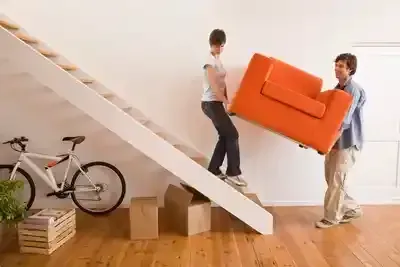
Moving-day moving hacks if using Professional Movers
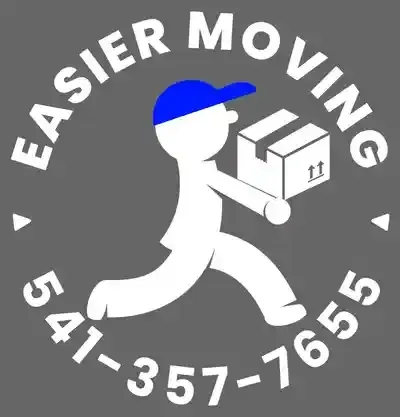
Clear a path for the movers
Before the movers arrive, clear a path for them to move your belongings and keep it clear till the end. Especially with large items, you can’t see what’s in front of you. Clear all extension cords and wires that can trip someone. If you have a wonky step on your staircase, label it and warn the movers.
Be there to greet your movers and moderate the move
Give the movers a walkthrough of your house or apartment. You can point out the fragile boxes (even if they are labeled, and they should be) and the furniture pieces that you need to have disassembled. If you have a preference for how things should be loaded, please communicate that early on. If there is anything damaged and unstable, Let them know if you want it to survive your move. Show the movers where the bathroom is in case they need to use it during the move. At this point, let them do there job!
Keep sealable plastic bags on hand
As the movers take apart your furniture you will want to keep all hardware like the screws organized. You can do that by using sealable plastic bags. Label them too, so you know which bag is for which piece of furniture.
Make sure your cell phone is charged
Your charger should be nearby or in your essentials bag, but do fully charge your phone the night before. You’ll need it to coordinate logistics with your movers and communicate with them while in transit if necessary. And you may need to use it while you’re picking up the rental truck as well (if you need directions, for instance).
Don’t skip the final walkthrough
We can’t stress this enough. Always go through each room for the last look. This is even more important if you are moving out of state or internationally. Open all cabinets and closets, check all outdoor spaces. What you leave behind might not be easy to retrieve because of the distance, if the new owner is moving in right away, or if your apartment has another renter lined up.
Tip your movers
Tips aren’t expected but are always appreciated by professional movers. If you have the budget for it and are happy with their job, give each mover a cash tip. Generally, it’s $20 per mover for a smaller move and $30-$50 per mover for more intense or long-distance moves.
Last-minute moving hacks
Having lots of time to plan, prep, and execute your move is great; however, it doesn’t always work out that way. Follow these moving and packing tips, if you are in a hurry.
Start with logistics
Figure out how you’re getting from point A to point B before doing anything else. You can wing a lot of things with moving, but not this. The quickest thing to do is hire professionals, but in peak season it way be difficult to find someone short notice. Same goes for rental trucks.
Pack now and sort later
Now is the time to pack, not think. Take care to wrap valuables, breakables and sharp items properly, but don’t put pressure on yourself to organize or label your boxes — you’ll figure it all out later when you’re not on a tight deadline. We usually recommend a room be put on boxes so you know where it came from at least.
Label with mover shorthand
- MBR = Master Bedroom
- BR1 = Bedroom one
- M Bath = Master Bath
- MC = Master closet
- Bath = Bathroom
- K = Kitchen
- LR = Living room
- DR = Dining room
- Laundry = Laundry room
- G = Garage
- LC = Linen closet
- EC = Entry closet
Focus on what you are good at
Anything you do will save you money in this situation. So the best thing to do is, focus on what you are good at and call in help, whether professional or friends and family. Set the tasks for each person and focus only on what you need to do. Or call in Professionals like us to do it all for you.
Leave some tasks to the movers
If you’re working with a moving company, you can offload some of the tasks to them, such as wrapping up furniture and getting last-minute items into boxes. Know that this may tack on some time, and thus some cash, to your final bill.
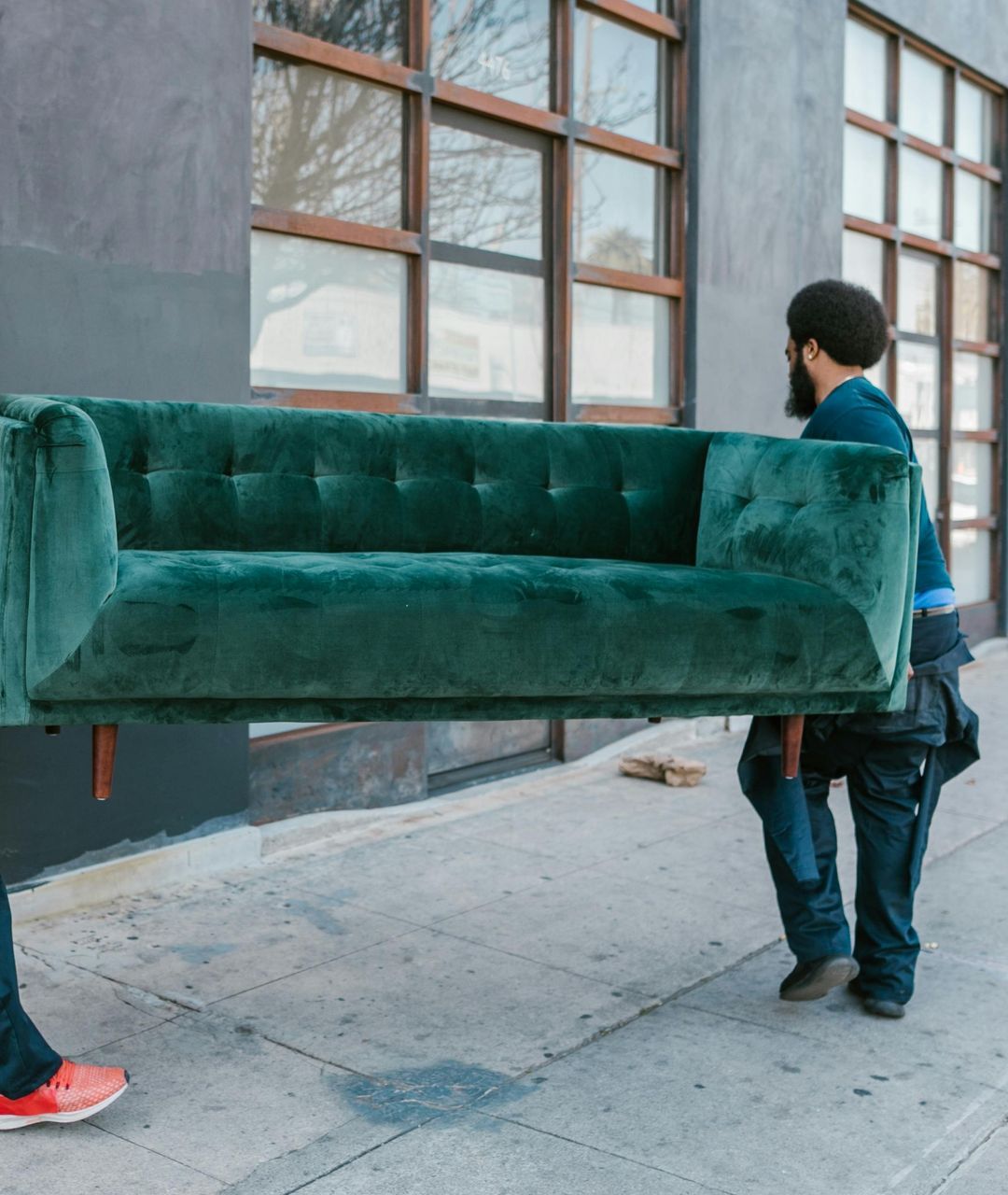
Unpacking hacks and tips
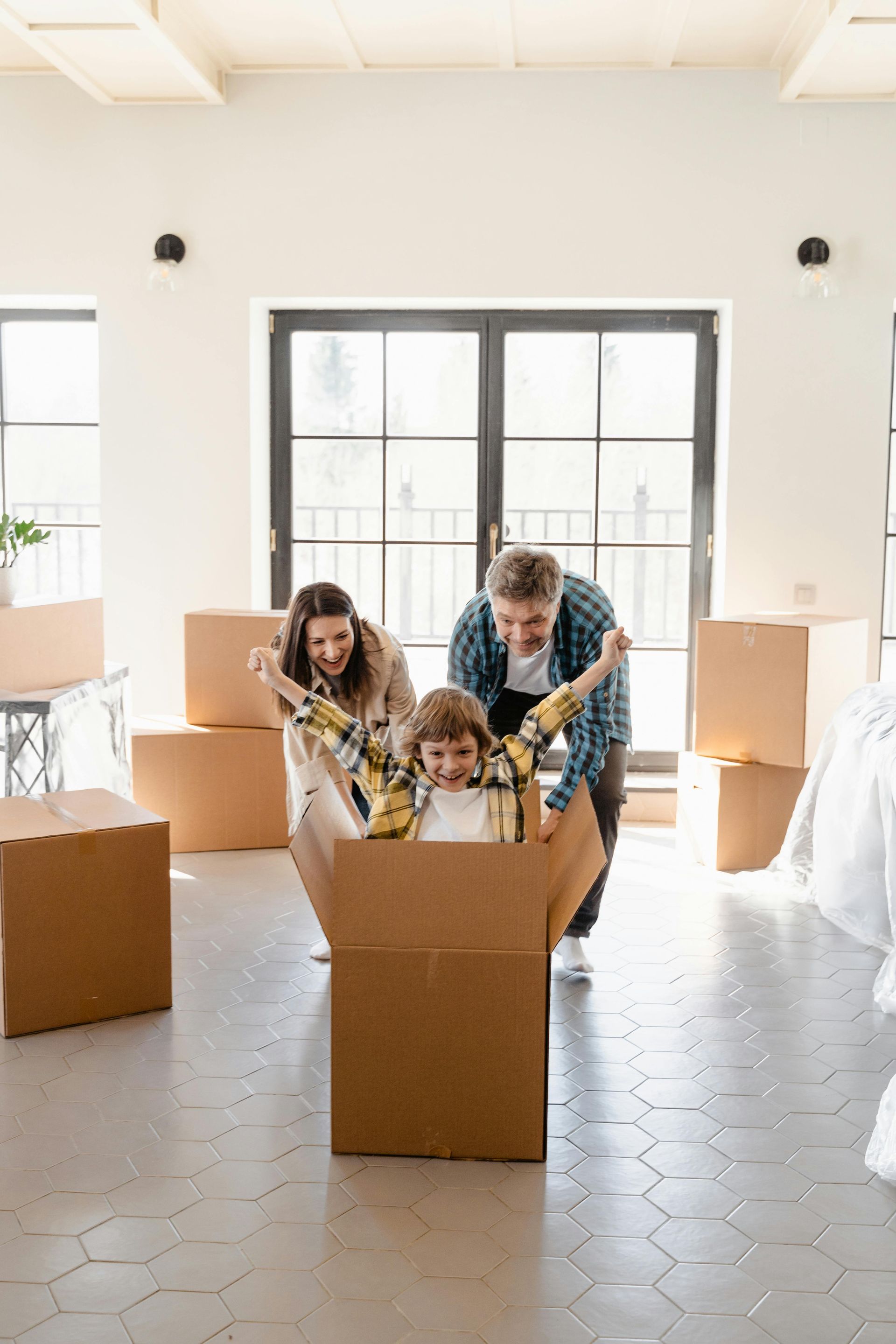
You’ve finally arrived, but there’s still more to be done. Here’s how to stop procrastinating and speed up your unpack.
Unpack only the essentials first
This will likely include your essentials bag and box with your everyday bathroom things, kitchen items, clothes to sleep in and for the next day, and so on.
Make the kitchen the first room you unpack
Getting the kitchen done first will give you a great sense of accomplishment right off the bat and allow you to focus on the easier-to-unpack rooms. Most kitchens have a larger amount of boxes, so if it gets done and cartons out, unpacking will seem less overwhelming.
Give yourself a deadline
Schedule a housewarming party or a more casual get-together for a few weeks after your move. This will give you a deadline for having all of your unpacking done. Feeling decisive? Dump out a box worth of stuff onto your bed or in your bathtub. Now you have no choice but to clear it all out and put everything away.
Get rid of boxes as you empty them
As soon as a box is emptied of all its items, break it down and recycle it. This will give you a physical marker of progress and clear up much-needed space in your new home.
Put on some tunes
Music makes everything better. Skip the TV. It will just be a distraction. Put on some good tunes to entertain yourself while unpacking and provide a much-needed distraction from the monotony.
Do a little bit at a time
Don’t stress yourself out trying to get every single box unpacked right away. Get the major things done. Focus on doing what you can as you can. Take a break in between unpacking sessions to do something fun. Devoting just 10 or 15 minutes at a time to unpacking is sufficient. It will all get done eventually.
Make a Fun Food Plan
Let’s get real here: You’re not going to cook while also settling in and unpacking. Give yourself the gift of guilt-free takeout so you can focus more on everything else that needs to get done. Try a new place you’ve always wanted to try or indulge in your favorite dishes. Make it fun. If the day is feeling long and you want to get more done, take an hour to eat out, away from all the stress.
Take a break from your new home
If you can’t stand looking at all those boxes any longer, go out to eat or to meet your new neighbors. Explore the new area by taking a walk in the neighborhood. Or stay in and read a book or pop some bubbly to celebrate your successful move. You worked hard!
Unpacking Services
Our team of professionals can help you with all your unpacking needs. We can even send just 1 man to unpack boxes while you place them where they belong and remove the empty packing materials when done. Hack your move in Eugene OR
Moving hacks are all about making things just a bit easier on yourself. Follow the ones above, and you will have a successful, low stress move!
Welcome to Easier Moving, the top-rated moving company in the area. We offer professional and reliable moving services to help you move with ease.
